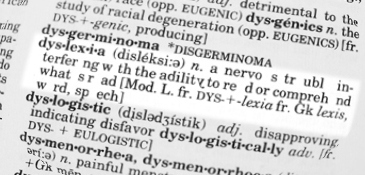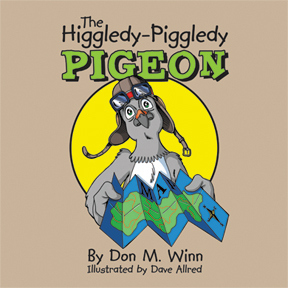Dyslexia 101: What Every Parent, Teacher and Dyslexic Needs to Know
 Dyslexia has been a part of my life from birth, although it wasn’t noticeable until I started school. For most of my life I was bemused and perplexed by my dyslexia, as were my teachers. I didn’t understand why I struggled with so many different things, not just reading, but writing, numbers, sequencing, and more. I felt ashamed and had very unrealistic expectations of what I could and could not do.
Dyslexia has been a part of my life from birth, although it wasn’t noticeable until I started school. For most of my life I was bemused and perplexed by my dyslexia, as were my teachers. I didn’t understand why I struggled with so many different things, not just reading, but writing, numbers, sequencing, and more. I felt ashamed and had very unrealistic expectations of what I could and could not do.
This internal conflict stayed with me for most of my adult life and even when I succeeded or excelled in certain endeavors, it seemed more of a fluke. I never really felt like success was deserved. Little did I know that my story, filled with inner conflict and struggle, was not unique to me and that I share it with literally hundreds of thousands of other people with dyslexia.
 My perception and understanding of dyslexia, and in turn, of myself, took a dramatic leap forward a few years back when I discovered the Rawson Saunders school in my area that caters specifically to dyslexic students. The school was hosting a special screening of The Big Picture: Rethinking Dyslexia and I was invited. My world shifted profoundly as I recognized myself in the experiences of others for the very first time. Thus began my personal journey to understanding of what dyslexia is and is not. Since then I have written many articles about dyslexia and have done numerous presentations for parents and educators about the condition. For Dyslexia Awareness month I offer a concise shortlist of dyslexia articles I’ve written.
My perception and understanding of dyslexia, and in turn, of myself, took a dramatic leap forward a few years back when I discovered the Rawson Saunders school in my area that caters specifically to dyslexic students. The school was hosting a special screening of The Big Picture: Rethinking Dyslexia and I was invited. My world shifted profoundly as I recognized myself in the experiences of others for the very first time. Thus began my personal journey to understanding of what dyslexia is and is not. Since then I have written many articles about dyslexia and have done numerous presentations for parents and educators about the condition. For Dyslexia Awareness month I offer a concise shortlist of dyslexia articles I’ve written.
For anyone reading this blog, I would like to hear about your journey, either with dyslexia or in working with someone with dyslexia
Here is where it all started, my screening of The Big Picture, Rethinking Dyslexia.
A follow-up to The Big Picture documentary, where I share a few facts I found interesting about dyslexia.
Tools and Strategies for Dealing with Dyslexia: Reading Aloud
Tools and Strategies for dealing with Dysgraphia: Writing with Confidence
Alleviating the Complications of Shame for Dyslexic Children.
Ways to communicate with and encourage children with dyslexia.
Parenting with Dyslexia: Reading with your Kids
Creative Writing and Dyslexia may seem like an unlikely combination, but some of our most talented writers have dyslexia.
A brief look at the genetic links (nature) to dyslexia and how nurture (outside help) and hard work can help to conquer what nature dealt us.
Discover how hero narratives have the power to change our conscious belief systems—especially our beliefs about ourselves and what we are capable of doing.
Taken from one of my presentations about dyslexia; see how fostering the love of story can help motivate the at-risk, struggling reader.
The upside to being dyslexic.
It may seem basic, but read about how the words we use can have a positive influence on the struggling reader.
For last year’s teacher appreciation month I talked about one of my teachers that had a profound impact on my early life when my dyslexia was first diagnosed.
A great interview with Perry Stokes of the Rawson Saunders School where dyslexia means extraordinary.
Everyone Fails at First. Learn how that simple acknowledgement can have a profound impact on the struggling student.
 Also check out my dyslexia-inspired picture book, The Higgledy-Piggledy Pigeon. It’s the story of a carrier pigeon named Hank who starts flight school full of hope, but soon learns he has a terrible sense of direction due to dyslexia. Hank’s caring teacher patiently encourages him and helps him learn to compensate for his learning difference and this has a tremendous impact on his life.
Also check out my dyslexia-inspired picture book, The Higgledy-Piggledy Pigeon. It’s the story of a carrier pigeon named Hank who starts flight school full of hope, but soon learns he has a terrible sense of direction due to dyslexia. Hank’s caring teacher patiently encourages him and helps him learn to compensate for his learning difference and this has a tremendous impact on his life.
View The Higgledy-Piggledy Pigeon video.






